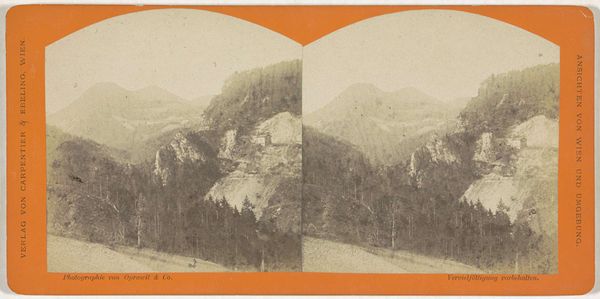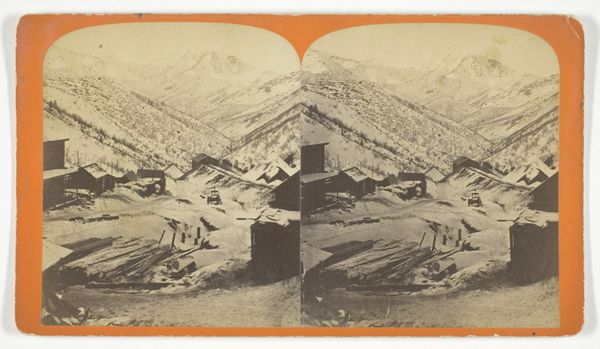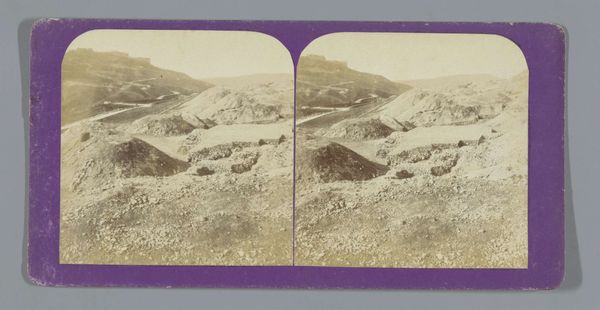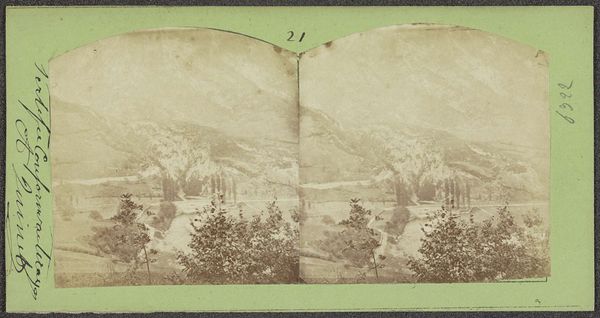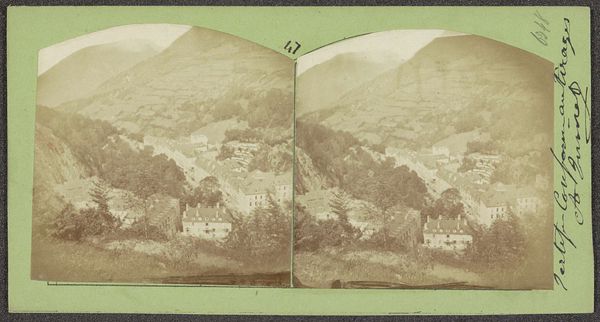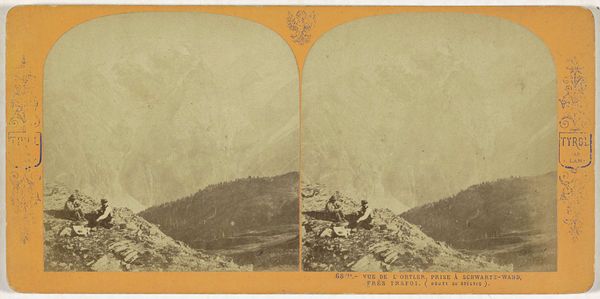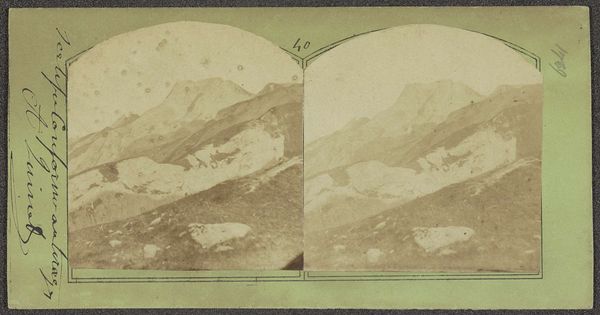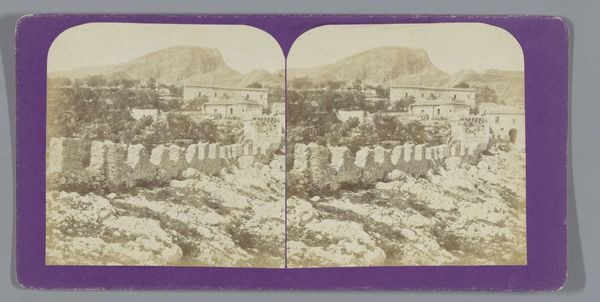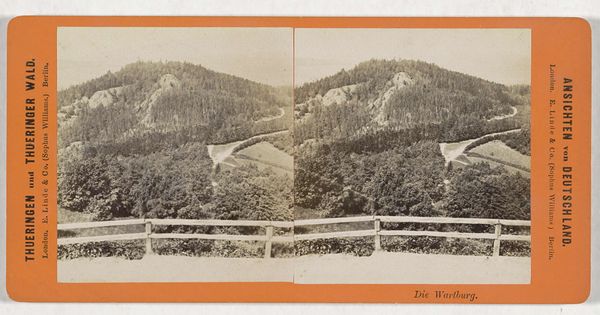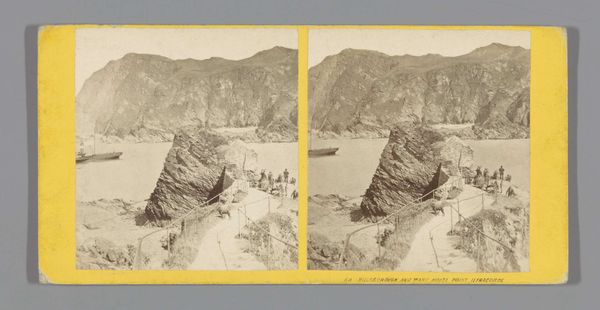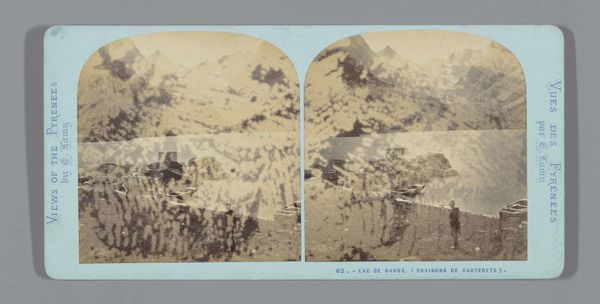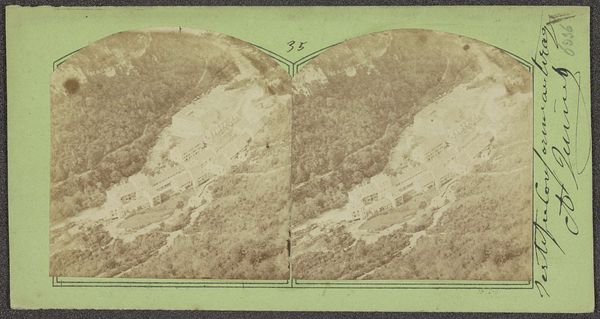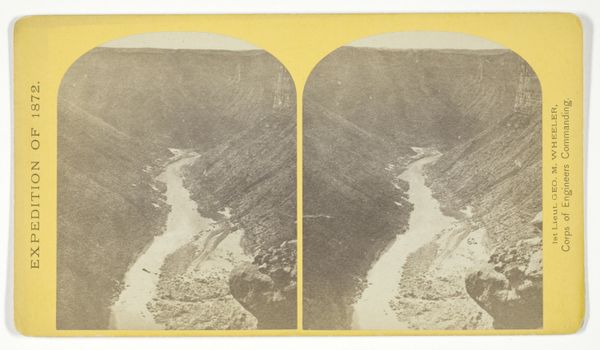
photography, gelatin-silver-print
#
landscape
#
photography
#
coloured pencil
#
mountain
#
gelatin-silver-print
#
watercolor
#
realism
Dimensions: height 86 mm, width 177 mm
Copyright: Rijks Museum: Open Domain
Curator: This gelatin-silver print, taken sometime between 1868 and 1878 by an anonymous photographer, presents a striking view of a train tunnel carved into the Weinzettelwand mountain, overlooking the Adlitzgraben valley. What jumps out at you? Editor: It has such a melancholy mood. A vast, stony landscape dwarfs everything, including the man-made tunnel, despite its purposeful presence. I almost feel a touch of claustrophobia just looking at it! Curator: It’s a testament to human ambition versus nature, definitely. Railroads were revolutionizing travel and industry. Constructing such tunnels represented significant engineering feats, pushing boundaries. Consider the environmental impact as well. Editor: Yes, it does have that air of claiming the land. It's visually beautiful, but slightly uneasy, knowing what went into creating this route. The tunnel looks vulnerable in this imposing landscape. What were the conditions like for the workers at the time? Curator: Back then, safety regulations were minimal. Labor was often grueling and dangerous, blasting through rock with basic tools. And, you see how this photo would have served not only a functional purpose but also to glorify the progress, projecting a certain image of strength and advancement. The distribution would happen mainly by rail companies promoting expansion of new possibilities with travel. Editor: Exactly, a subtle yet powerful propaganda, embedding expansion narratives within scenic photography. Were these landscapes intentionally devoid of visible laborers to further amplify that message of effortless conquest? It gives the railroad a presence of dominance and innovation. Curator: I think there were so many intentions for different audiences. On one level it provided the promise and availability for tourists, while for industrialists the access to vital locations was unparalleled. Today, we must think more about these images within their full context, recognizing both the progress and what costs it took. Editor: Absolutely, revisiting the past with both critical eyes and a sense of human accomplishment—however shadowed that may be—helps ground the now. This photographic work continues to inspire these complex dialogues over time.
Comments
No comments
Be the first to comment and join the conversation on the ultimate creative platform.
